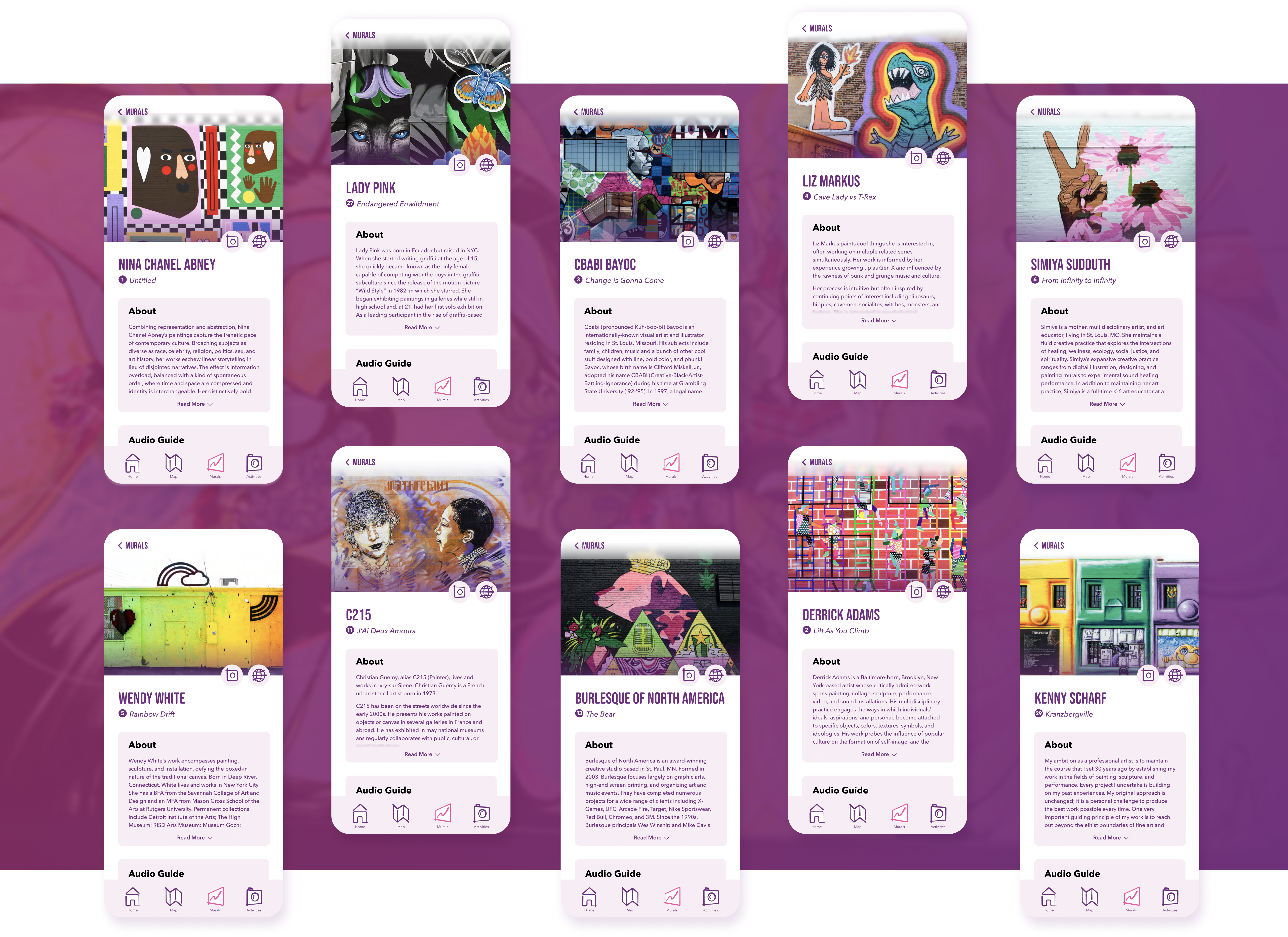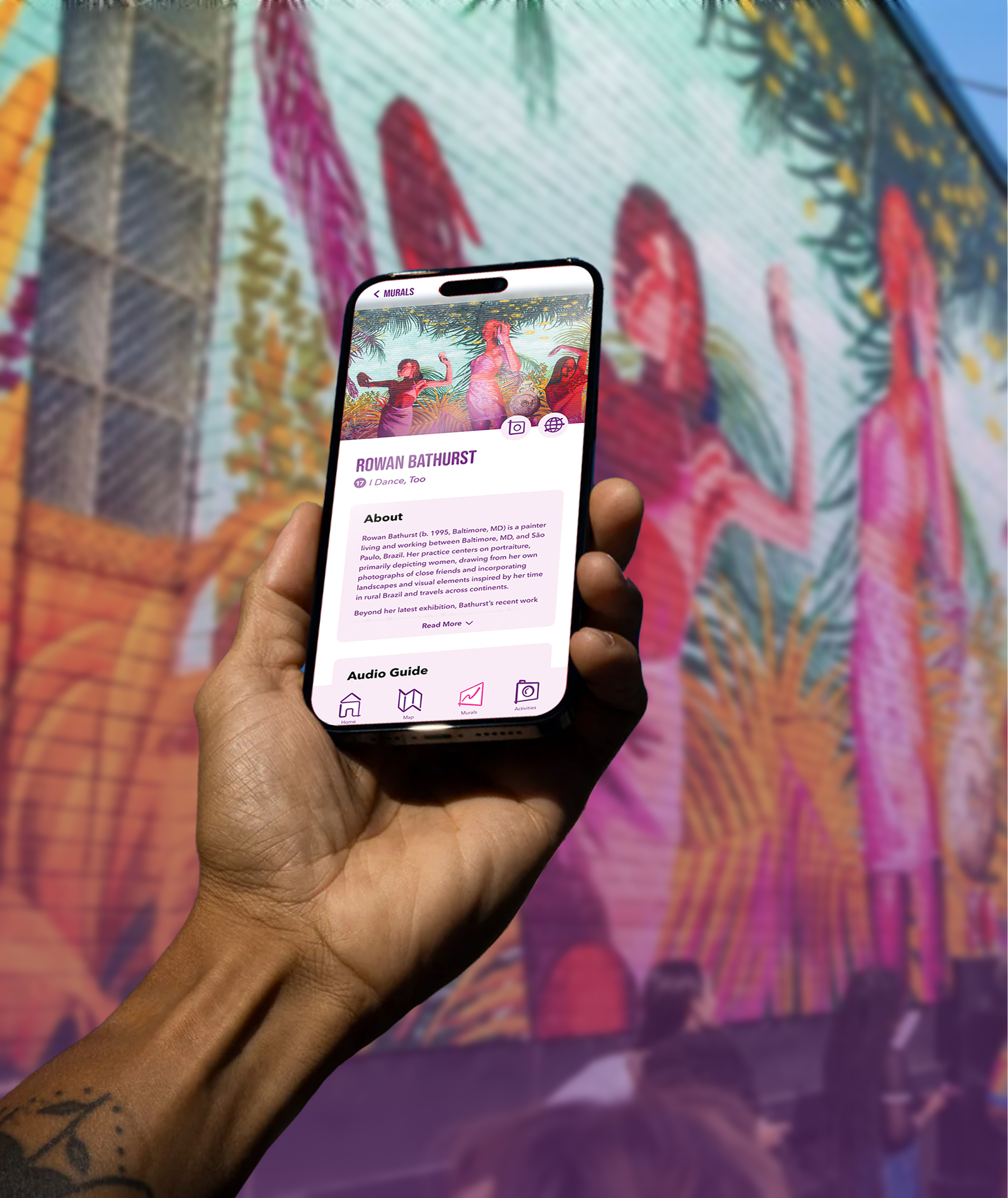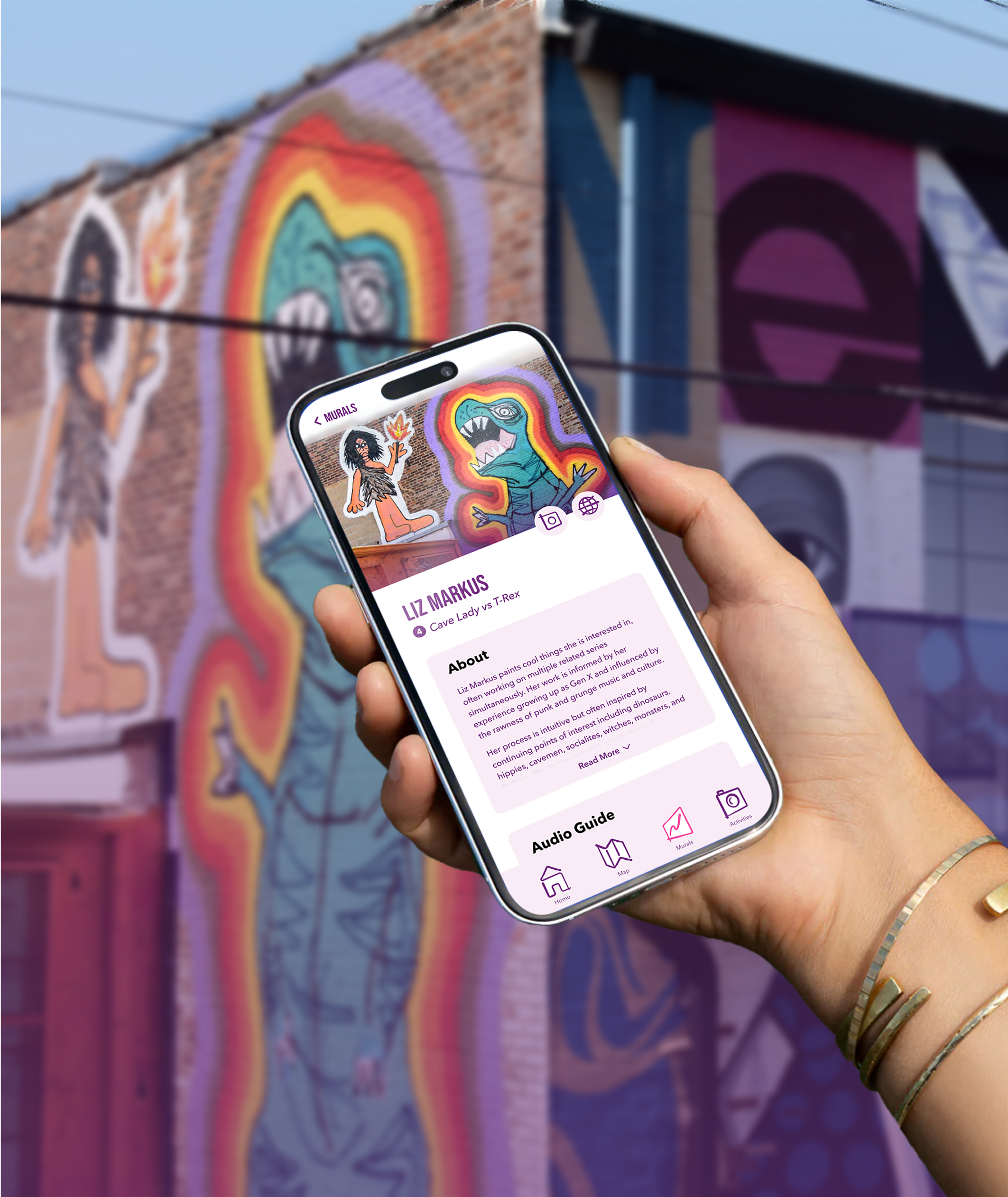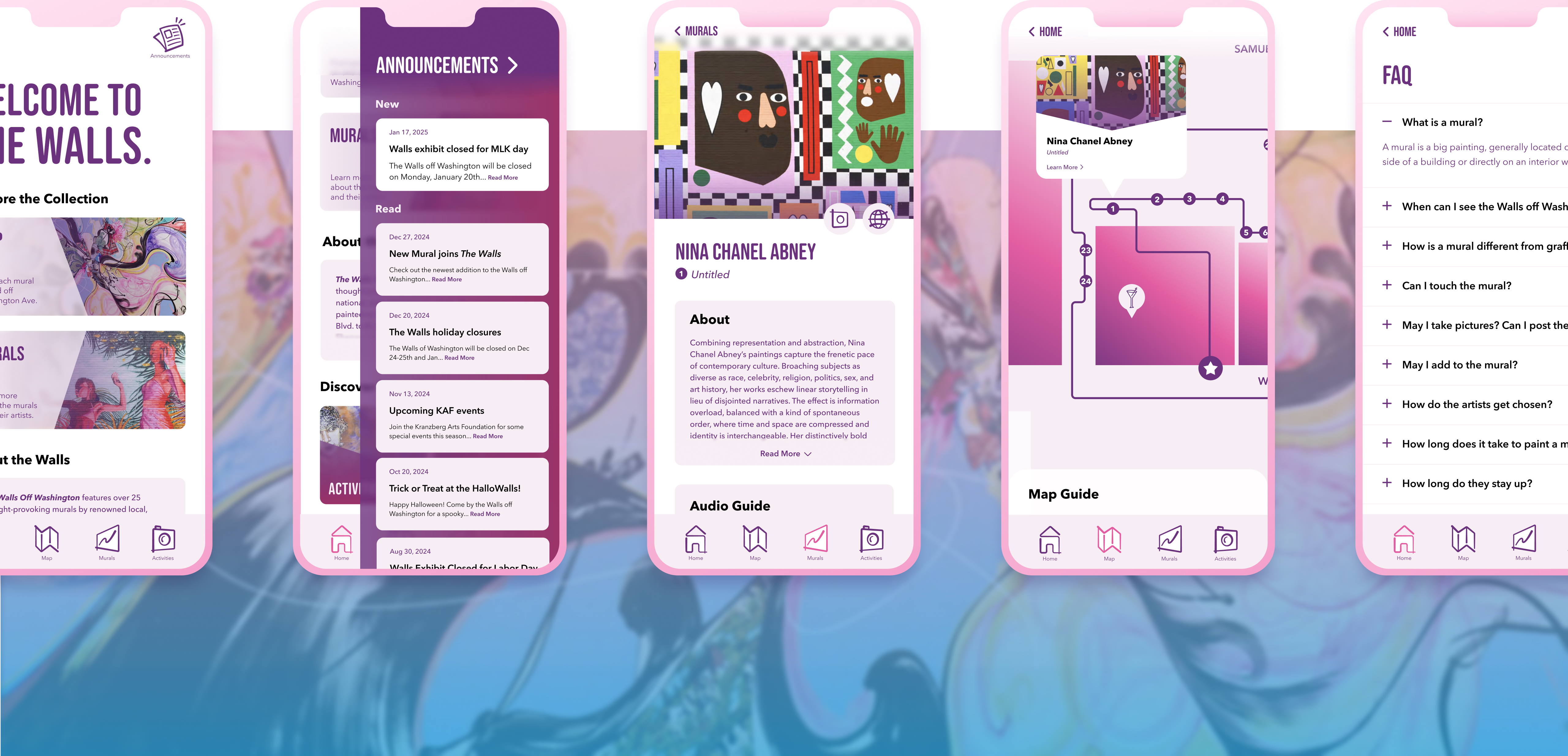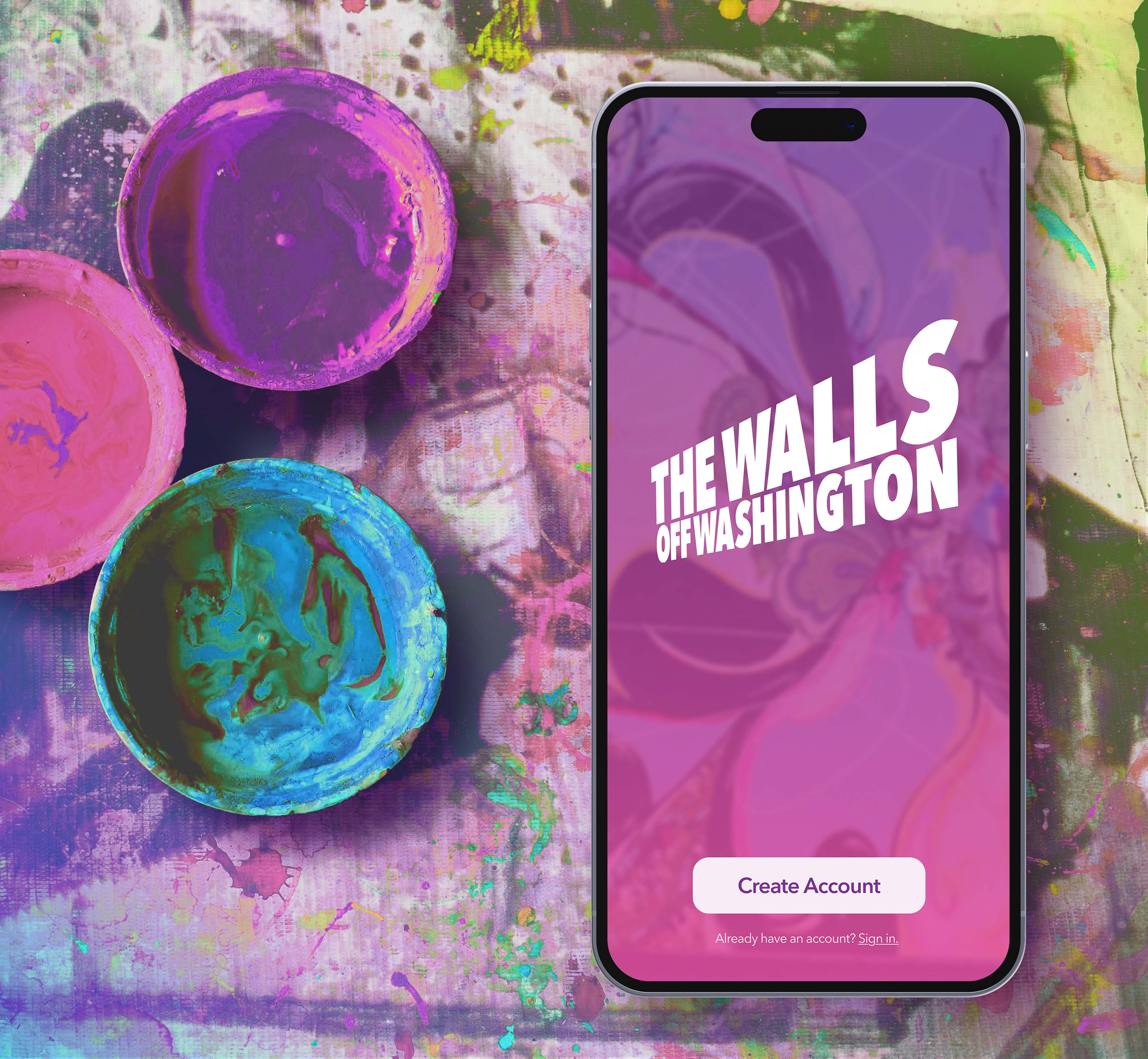
The Walls off Washington is a permanent collection of murals displayed along the streets of the St. Louis arts district. During my internship with them, the Kranzberg Arts Foundation was seeking to design and develop an app to make the exhibit more accessible and navigable for its visitors.
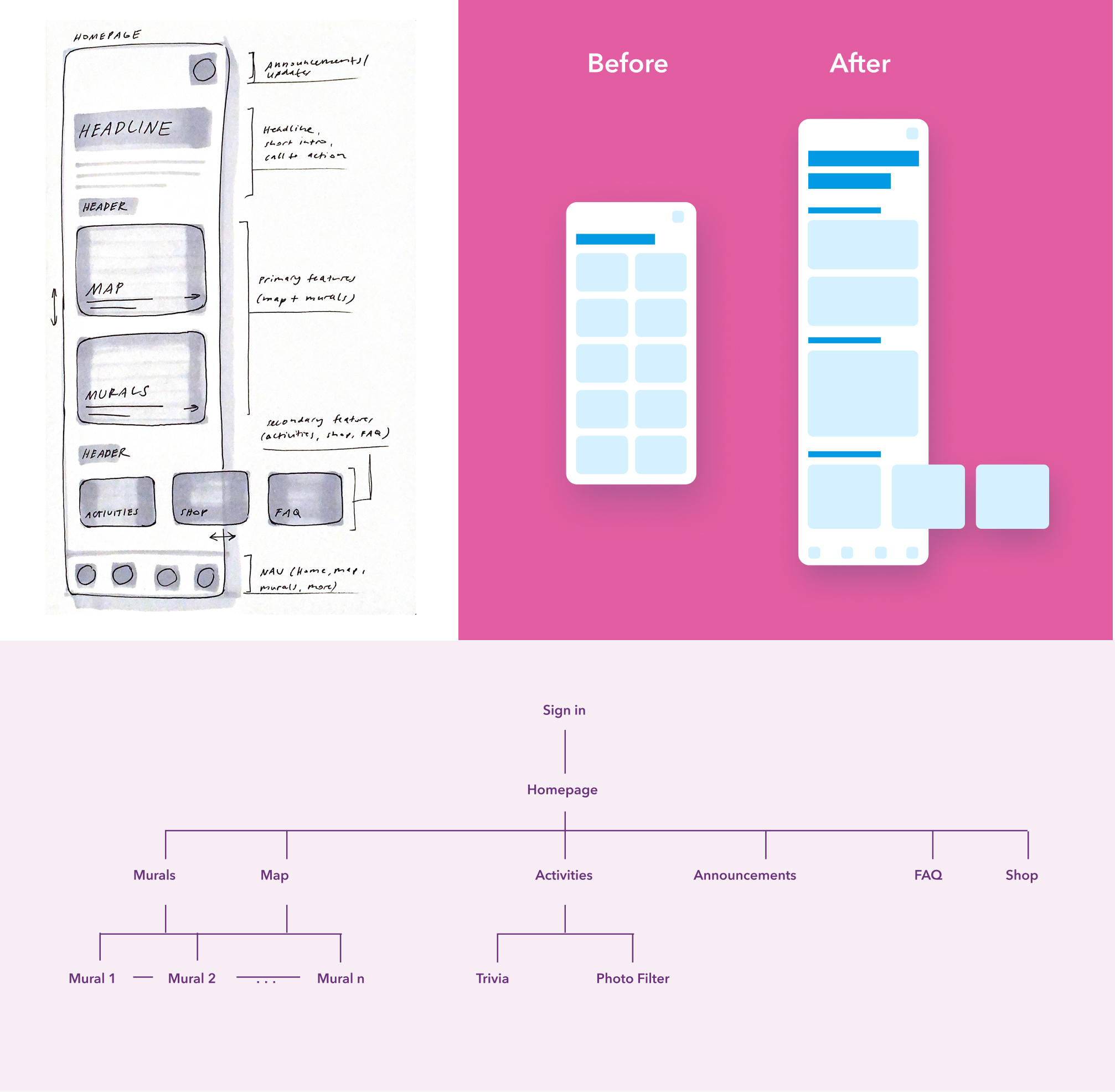
The main goals of this project were to create an app that could act as a substitute for the exhibit’s guided tours that were already offered by the foundation’s staff, as well as to provide an entirely digital guide of the walls for those who are unable to visit. With the app, KAF wanted to give visitors the freedom to navigate the walls at their own pace, have access to information direct from the artists, and have the option to participate in fun activities related to the artwork.
Some of the earliest challenges to overcome had to do with establishing and refining the hierarchy of the app’s features. Early on for example, there was a misconception that a static homepage with each feature represented equally would allow for the most clarity. However, through the testing of several design iterations, it was found that the homepage best served the user when its hierarchy prioritized the most important features, namely the exhibit’s map and its catalog of murals.
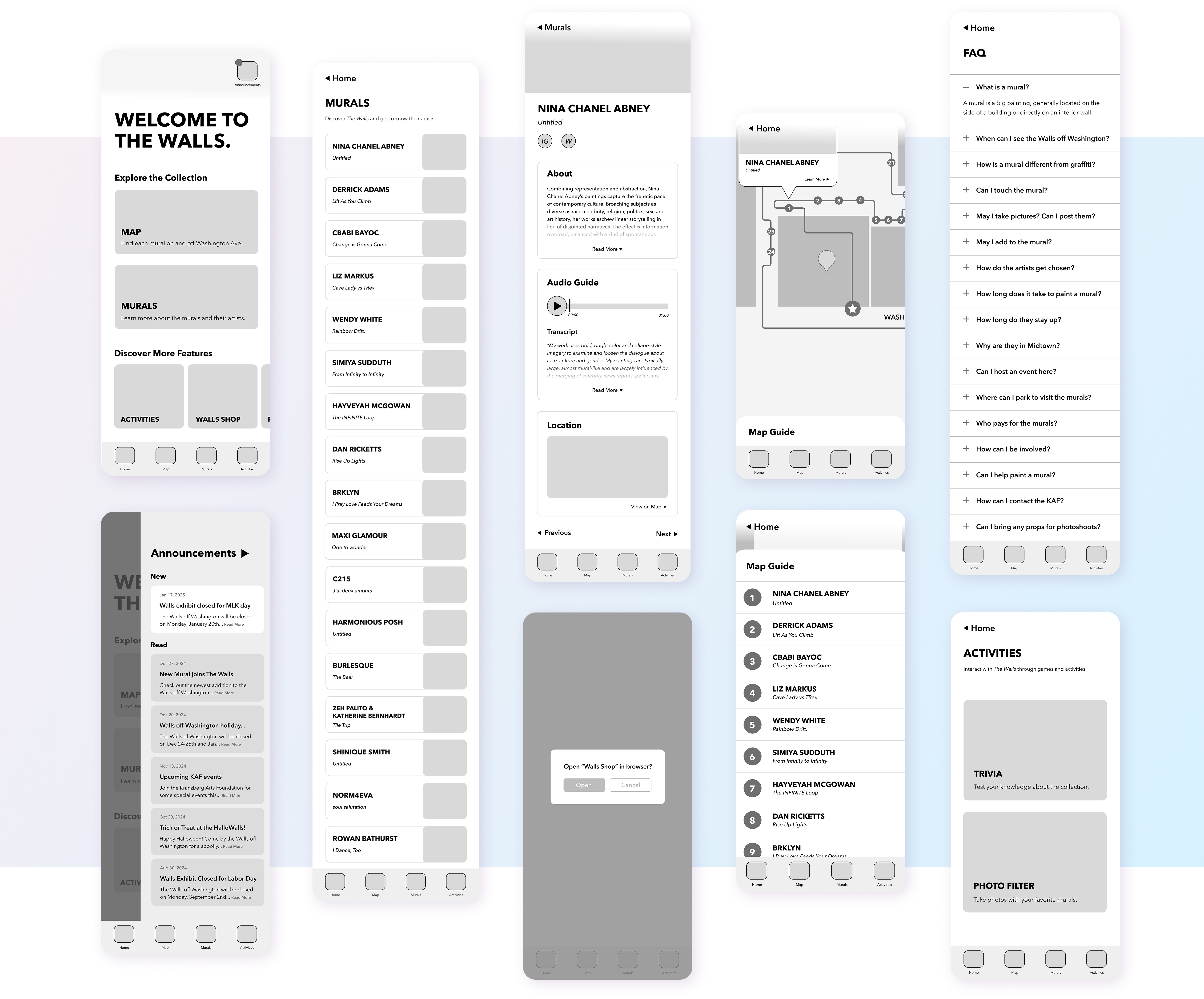
The wireframe phase of the project helped to iron out the journey of navigation between the app’s different pages. After establishing the Map and Mural Information Catalog as the prioritized features, it was important to create pathways to ease navigation between them as the user makes their way to each mural in the in-person exhibit.
This phase also helped to resolve some general issues of legibility, altering features like type size and case for body text and labels.
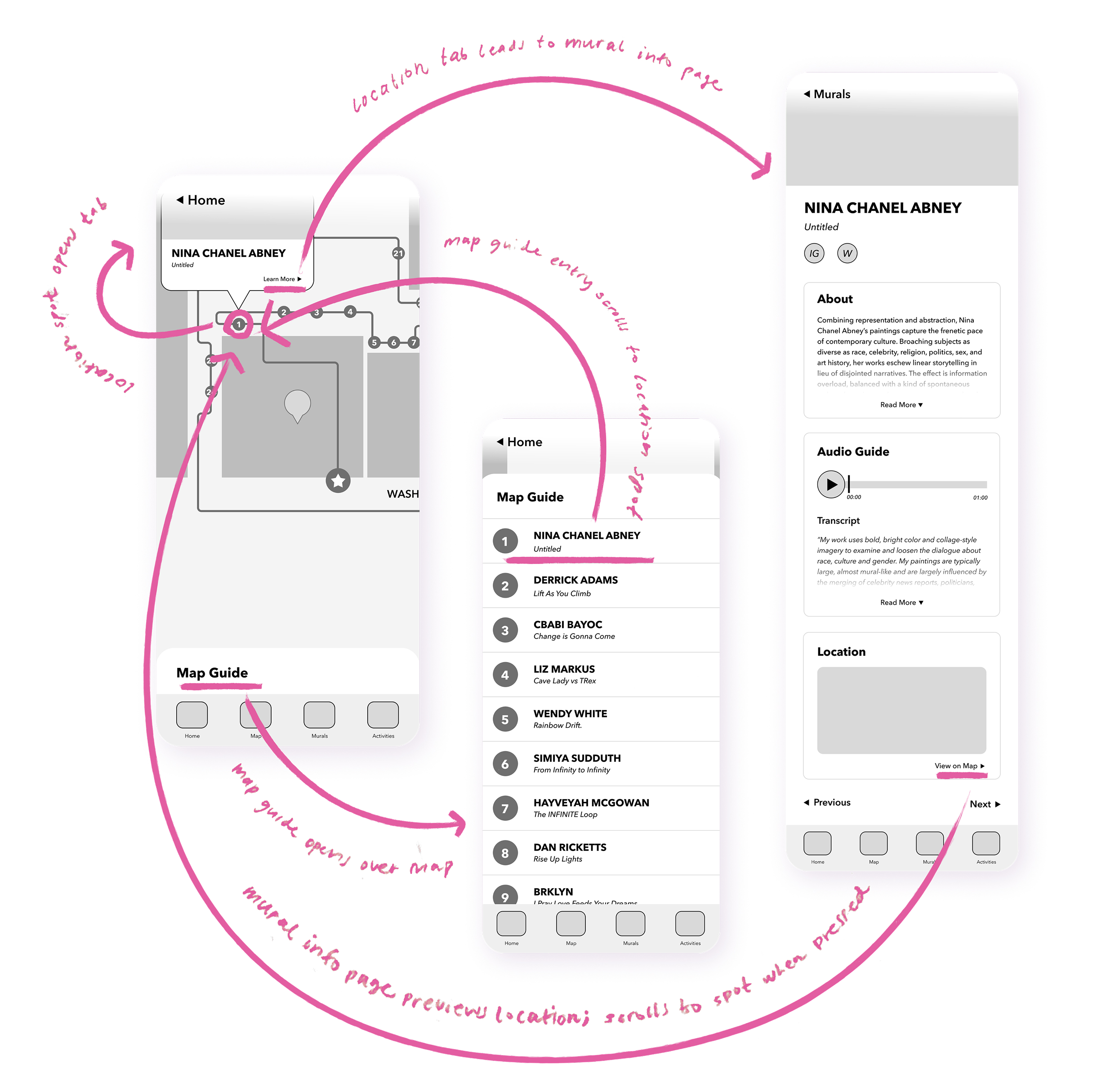
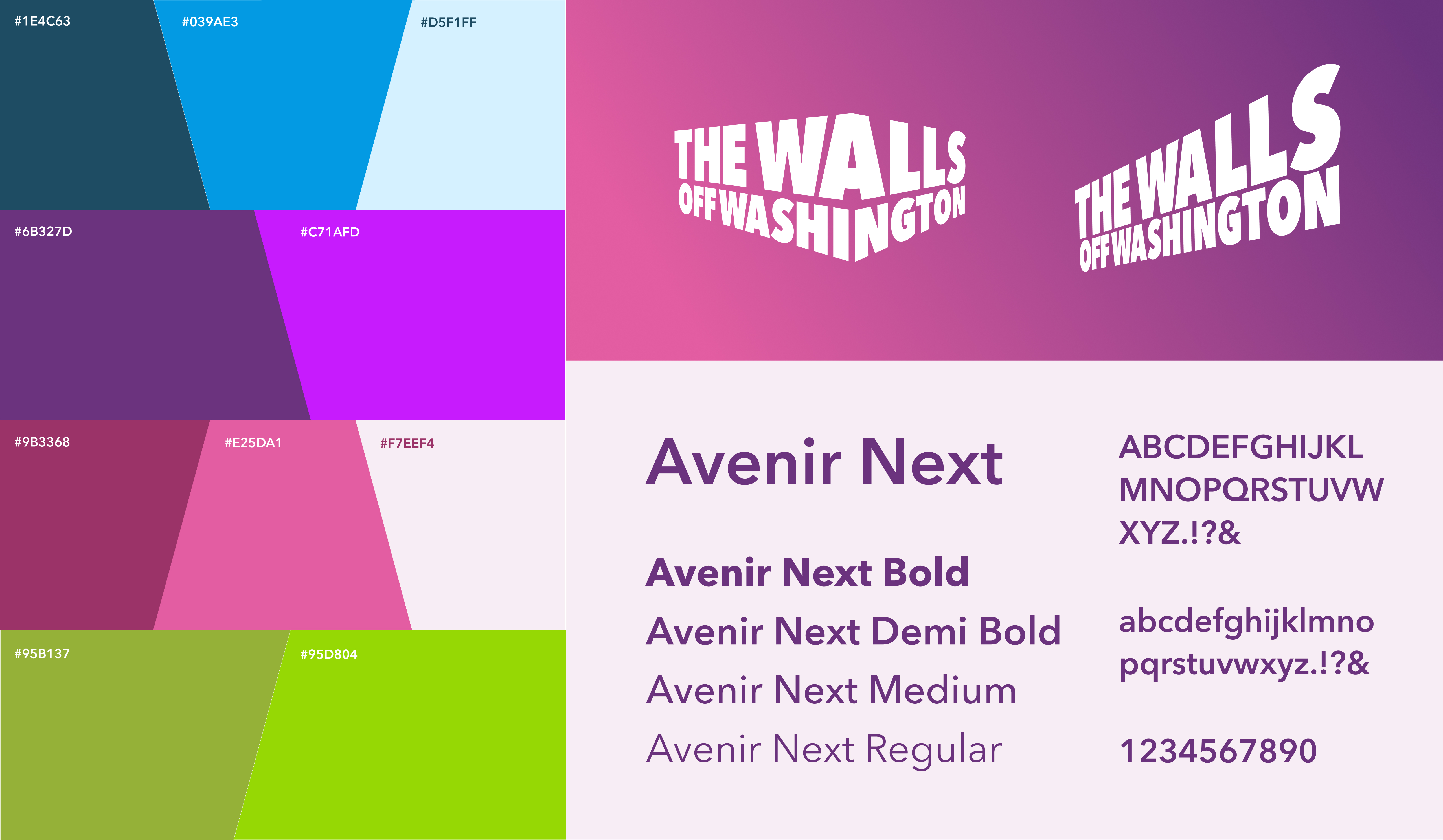
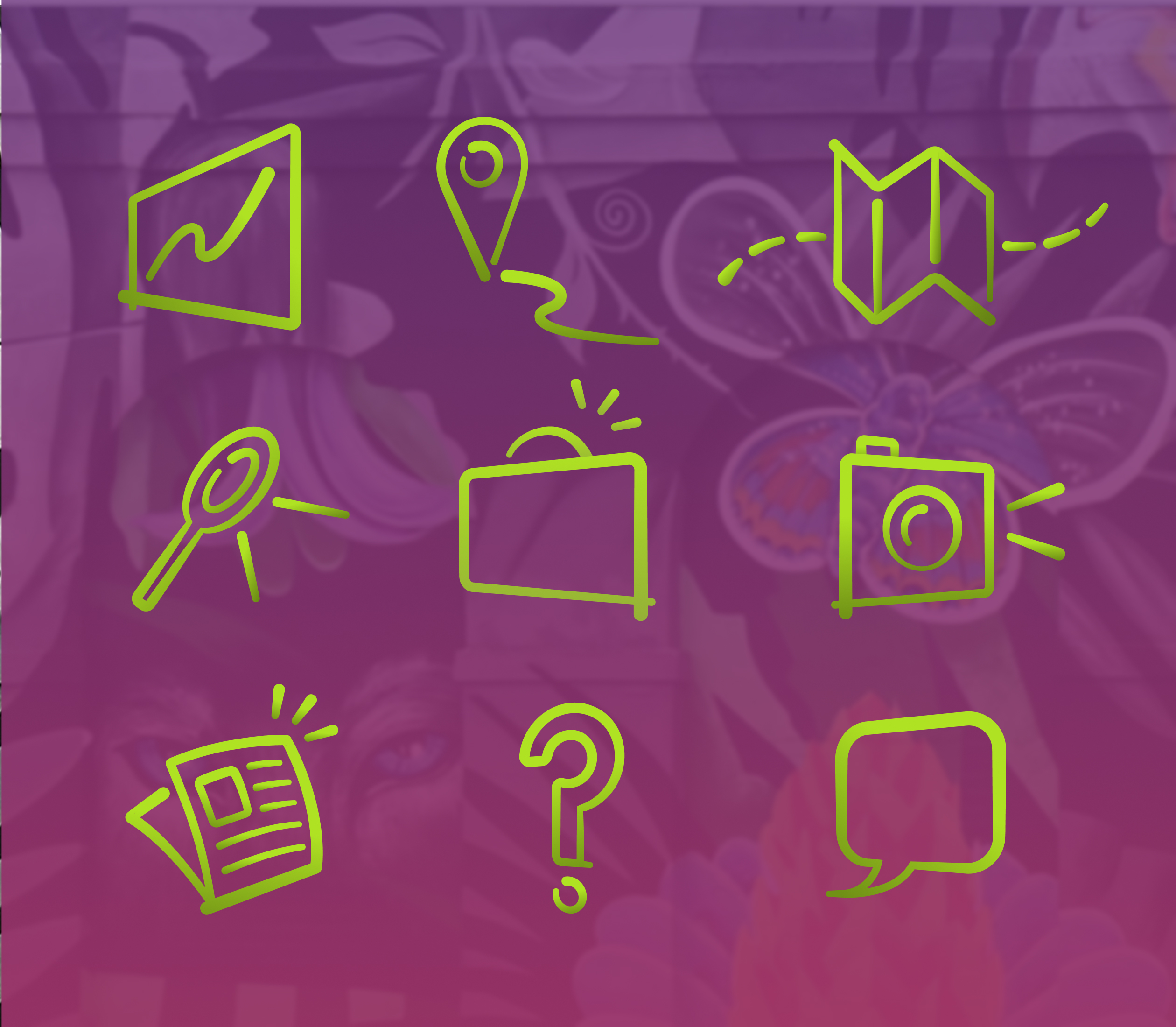
While much of the app’s visual system was inherited from the exhibit’s existing branding (logos, color palette, typefaces), the user interface includes several additional design details inspired by the unique visual features of street art. These include spray paint-inspired icons, soft colorful gradients, and angled elements to mimic the forced perspective of the logos.
The system as a whole maintains the simplicity of clean UI design without sacrificing the freedom, color, and creativity that is inherent to the creation and display of street art.
